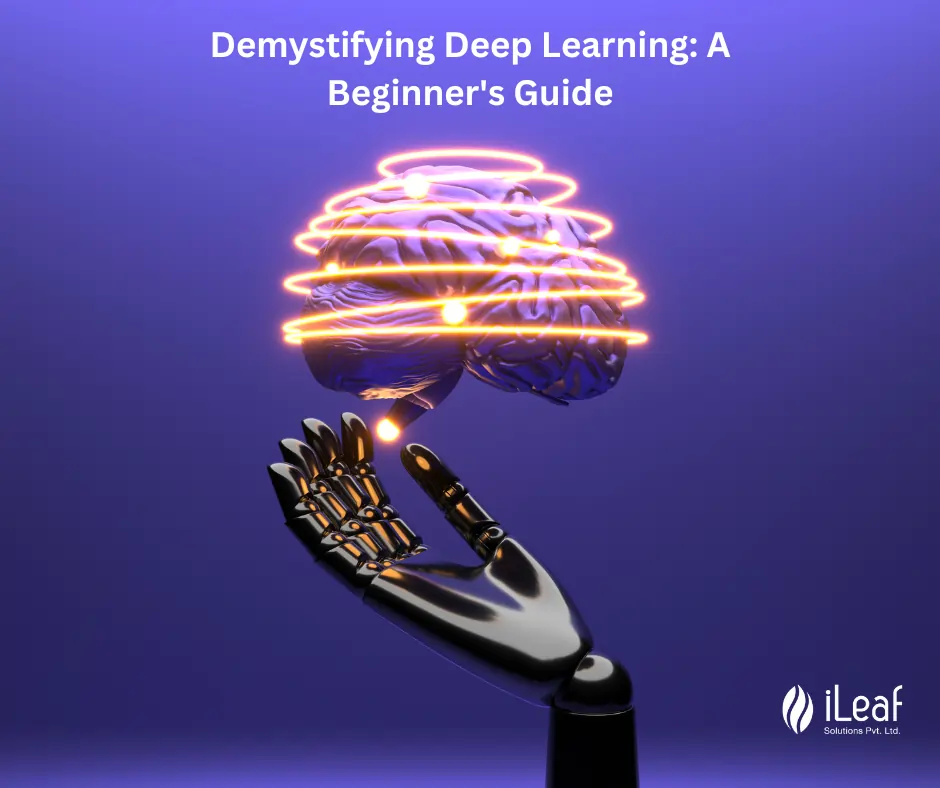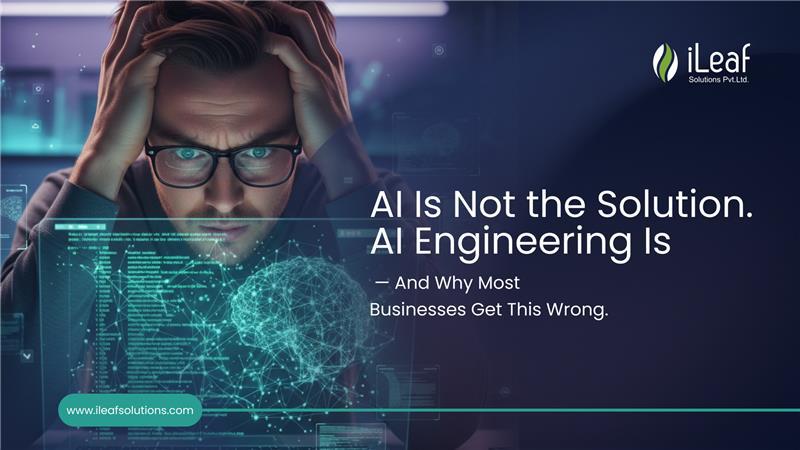Demystifying Deep Learning.A Beginners Guide

Table Of Contents
- Introduction
- Understanding Deep Learning
- What is Deep Learning?
- The Basics of Neural Networks
- Training Neural Networks
- Deep Learning Applications
- Deep Learning - The Future of AI
Introduction
Deep learning has emerged as a powerful technology in artificial intelligence, transforming various industries and driving innovation. It has gathered attention for its exceptional ability to learn directly from data, extracting meaningful representations and patterns without extensive programming.
The Deep Learning Chip market is growing faster than ever and is currently used in various fields, such as customer service, financial services, and healthcare. According to the survey done by Oracle Corporation in 2018, 80% of businesses are currently using chatbots powered by deep learning AI. This beginner's guide aims to illuminate deep learning and discover its power in unlocking new frontiers in AI.
Understanding Deep Learning
Deep learning is a subset of machine learning that trains artificial neural networks to learn and make predictions from complex and extensive data. Unlike traditional machine learning algorithms, deep learning models utilize multiple layers of interconnected neurons to automatically learn hierarchical representations of data. This allows them to extract features and intricate patterns from raw input data.
Deep learning models efficiently learn directly from raw data without needing manual feature engineering. They have the ability to handle unstructured data such as audio, images, and text and have achieved phenomenal performance in tasks such as natural language processing and image and speech recognition.
The impetus behind deep learning's success is using neural networks, which are computational models inspired by the function and structure of biological brains. Neural networks are composed of interconnected nodes called neurons, organized into layers. Each neuron takes input from the previous layer, applies an activation function, and passes the output to the next layer. Deep learning models can learn to make accurate predictions by adjusting the strength of connections (weights) between neurons.
The Basics of Neural Networks
Neural networks are the critical components of deep learning. To understand deep learning, it is vital to grasp the basics of neural networks. At its core, a neural network comprises layers of interconnected neurons that process and transform input data.
Neurons: Neurons are the building blocks of a neural network. Each neuron takes a number of inputs, performs a computation, and produces an output. The output is based on an activation function, which introduces non-linearity into the network, allowing it to model complex relationships in the data.
Layers: Neurons are structured into layers. A neural network generally consists of a single input layer, one or more hidden layers, and an output layer. The input layer receives the raw data, and subsequent layers process the information to make classifications or predictions.
Weights and Bias: Connections between neurons are represented by weights. Weight determines the strength and influence of each neuron's input on the output. Each neuron also has an associated bias that allows it to capture additional information.
Activation Functions: Activation functions bring non-linearity into the neural network, allowing it to learn complex relationships. Standard activation functions include tanh, sigmoid, and rectified linear units (ReLU).
Training Neural Networks
Training a neural network consists of optimizing biases and weights to make precise predictions. This process is typically achieved using a procedure called backpropagation. Backpropagation calculates the gradients of the loss function with respect to the network's parameters and modifies the biases and weights accordingly.
Data Preparation: To train a neural network, data must be prepared properly. This involves preprocessing steps such as standardizing the data, handling missing values, and dividing the dataset into training, validation, and testing sets.
Forward Propagation: In forward propagation, input data is fed through the network, and computations are carried out in each layer. The output is compared to the desired output, and the difference is calculated using a loss function.
Backpropagation: Backpropagation involves propagating the error backward through the network and adjusting the biases and weights in each layer to minimize the loss function. This iterative process continues until the network's performance reaches an optimum level.
Optimizers and Loss Functions: Optimizers control how the network's parameters are updated during training. Popular optimizers include Adam, Stochastic Gradient Descent (SGD), and RMSprop. Loss functions quantify the discrepancy between predicted and real outputs.
Deep Learning Applications
Deep learning has shown exceptional performance across various domains and has revolutionized multiple industries. Below are some real-world applications of deep learning:
Computer Vision: Deep learning models transcend tasks such as object detection, image classification, and segmentation. They have enabled breakthroughs in areas like medical imaging, autonomous driving, and surveillance systems.
Natural Language Processing: Deep learning has transformed natural language processing tasks such as language translation, sentiment analysis, and text generation. Applications include language understanding systems, chatbots, and voice assistants.
Speech Recognition: Deep learning models have enhanced speech recognition accuracy, enabling more precise voice-controlled systems, transcription, and voice assistants like Siri and Alexa.
Recommender Systems: Deep learning algorithms fuel recommendation engines, enabling personalized recommendations for movies, products, music, and more. These systems assess user preferences and behavior to suggest relevant items.
Autonomous Vehicles: Deep learning is essential for autonomous vehicles, allowing them to perceive and understand their environment through sensor data and computer vision analysis. It helps with tasks like lane recognition, object detection, and decision-making.
Healthcare and Medical Diagnostics: Deep learning has made noteworthy strides in healthcare, aiding in disease diagnosis, medical imaging analysis, drug discovery, and personalized medicine.
Deep Learning - The Future of AI
In conclusion, deep learning is a pathbreaking technology that has transformed the field of artificial intelligence. Through advanced training techniques and neural networks, deep learning models have performed phenomenally in multiple applications, including computer vision, natural language processing, speech recognition, and healthcare.
Deep learning has emerged as a powerful tool for driving the success and growth of businesses across various industries. Deep learning has given us image-based product searches and is used in video websites' stock photography to make visual content discoverable for the user. Driving has become a much more advanced experience for drivers with deep learning and an opportunity for investors and businesses, given the fact that automotive industries enjoy a $320B capacity for deep learning software. Financial service firms like McKinsey hope for a $220B capacity for deep learning software in the insurance business, which can detect fraud, reduce risk, automate trading, and provide “robo-advice” to investors.
Ready to Leverage Deep Learning for Your Business?
Deep learning technology has limitless potential and can help businesses enhance productivity, increase retention, and drive revenue through collaboration with leading AI and machine learning companies. iLeaf Solutions stands out as a digital development company that harnesses the power of Deep Learning to drive innovation and contribute to the rapidly growing field of artificial intelligence. With our deep learning expertise, technical capabilities, and industry knowledge, we enable businesses to overcome accelerated implementation timelines, technical complexities and help them maximize the value derived from deep learning technology.
Be a part of the transformative impact that deep learning has on AI's future with iLeaf Solutions.














